When it comes to understanding electronics and circuitry, learning how to wire a diode is a fundamental skill. Whether for hobbyist projects or professional applications, the proper wiring of a diode is essential for ensuring the functionality and efficiency of electronic devices. By mastering the art of diode wiring, individuals can enhance their knowledge of basic electronic components and contribute to the successful completion of various electrical projects.
In this article, we will explore the step-by-step process of wiring a diode, providing valuable insights and expert tips to help enthusiasts and professionals alike harness the potential of these critical components.
What Is A Diode?
Diodes, as a two-terminal electronic component, permit current flow in one direction while blocking it in the opposite direction. They play a crucial role in electronic circuits by facilitating rectification (converting AC to DC), voltage regulation, signal modulation, and switching. Typically made from semiconductor materials like silicon or germanium, diodes are utilized in an array of electronic devices, encompassing power supplies, radios, and computers.
How To Wire A Diode?
Suppose you’re curious about how electronic devices in your home utilize electricity uniquely. In that case, you might be interested to learn that electricians who design these appliances and industrial tools must understand how to connect diodes for these specific purposes.
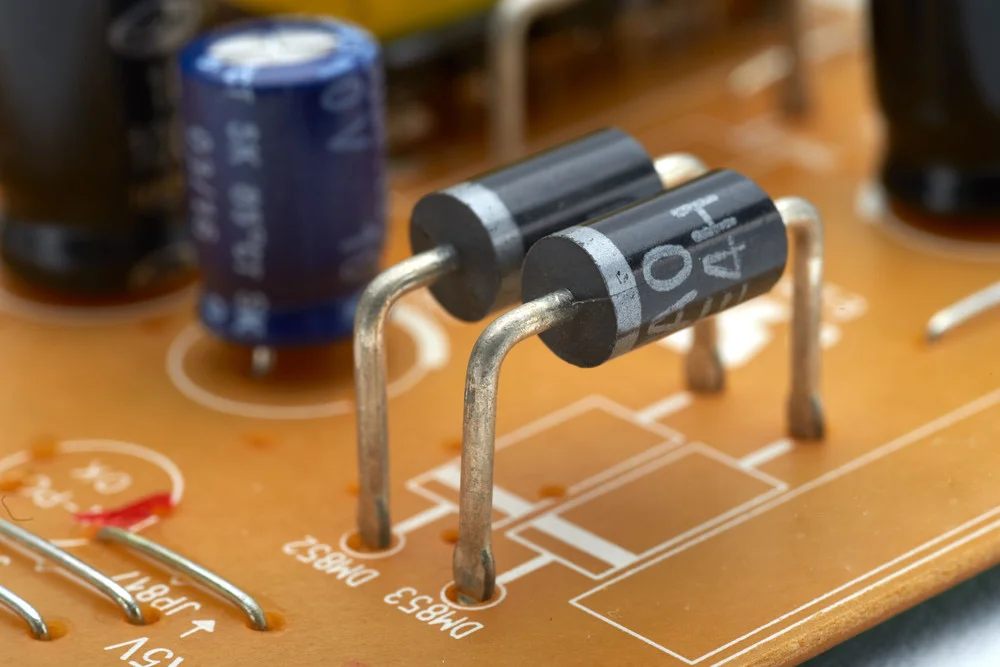
Diode Installation
When you are connecting a diode in an electric circuit, ensure that the anode and cathode are positioned so that charge flows from the positively charged anode to the negatively charged cathode.
To help you remember this, note that in the diode circuit diagram, the vertical line near the triangle resembles a negative sign, suggesting that the diode’s end is negatively charged. This mental connection can help you visualize the flow of charges from the positive end to the negative end, indicating how electrons move within the diode junction.
Consider the circuit’s potential and current and how they impact the diode’s placement. Think of the diode as a switch that opens or closes to complete the circuit. If the potential allows charge to pass through the diode, the switch closes, enabling current flow. This state is known as the forward biasing of the diode.
You can apply Ohm’s Law to compute voltage (V), current (I), and resistance (R) to evaluate the voltage difference between the power source and the diode. Connecting a diode in the opposite direction would reverse bias the diode, causing current to move from cathode to anode. This action enlarges the depletion region of the diode, a zone on one side of the diode junction that lacks electrons and holes.
Electrons from the negatively charged region will fill the holes in the positively charged area. When establishing diode connections, observe how the diode’s behavior changes based on its orientation in the circuit.
The Diode Circuit
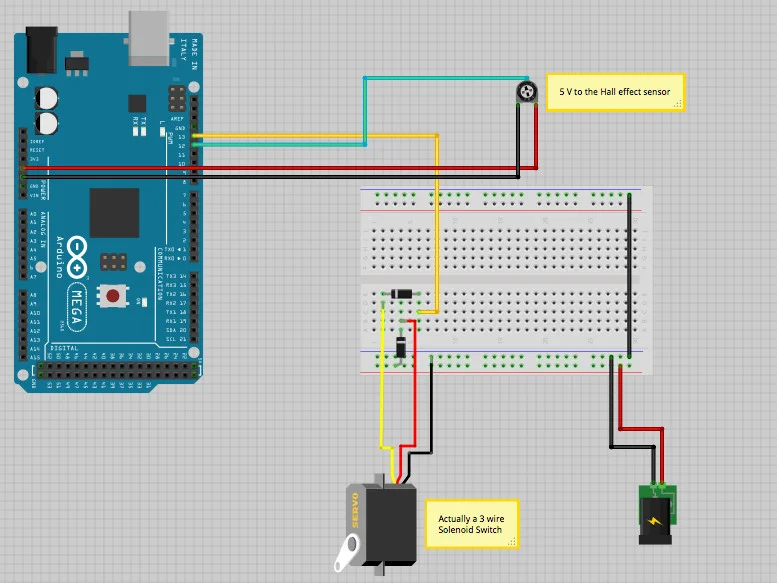
In electrical circuits, diodes play a crucial role in ensuring current flows in one direction. These components consist of two electrodes, namely an anode and a cathode, separated by a material.
The flow of electrons originates from the anode, where oxidation or electron loss takes place, and moves towards the cathode, where reduction or electron gain occurs. Typically, diodes are manufactured using semiconductor materials that facilitate charge flow in the presence of an electric current or through the regulation of their resistance using a process called doping.
Doping involves introducing impurities into a semiconductor to generate holes, effectively creating either an n-type (associated with a negative charge) or p-type (associated with a positive charge) semiconductor.
An n-type semiconductor holds an excess of electrons arranged in a manner that allows charge to pass through easily while remaining controllable. Such semiconductors are commonly derived from elements like arsenic, phosphorus, antimony, and bismuth, which possess five valence electrons. On the other hand, a p-type semiconductor carries a positive charge due to holes and is typically made from elements like gallium, boron, and indium, among others.
The interplay of electrons and holes enables charge movement between p-type and n-type semiconductors, and when connected, they form a P-N junction. In diodes that facilitate one-way current flow, electrons swiftly transfer from the n-type semiconductor to the p-type one.
Diodes are often crafted from materials such as silicon, germanium, or selenium. Engineers fabricating diodes may use metal electrodes within a chamber devoid of gas or with low-pressure gas.
Features Of Diodes
Diodes offer several key features that make them essential components in various electronic systems. Firstly, diodes are known for their ability to control the flow of electrical current, enabling them to act as one-way valves for electricity. Additionally, diodes have the capability to efficiently convert alternating current (AC) to direct current (DC), making them critical for power supply units and devices that require DC power.
Furthermore, diodes are adept at regulating voltage and protecting against reverse currents, ensuring the stable and safe operation of electronic systems. Moreover, diodes play a crucial role in signal processing functions, contributing to the effective transmission and modulation of electronic signals in a wide range of applications. Lastly, diodes demonstrate exceptional reliability and durability, making them integral to the efficient and consistent performance of electronic devices across industries.
Diode Installation For Protection
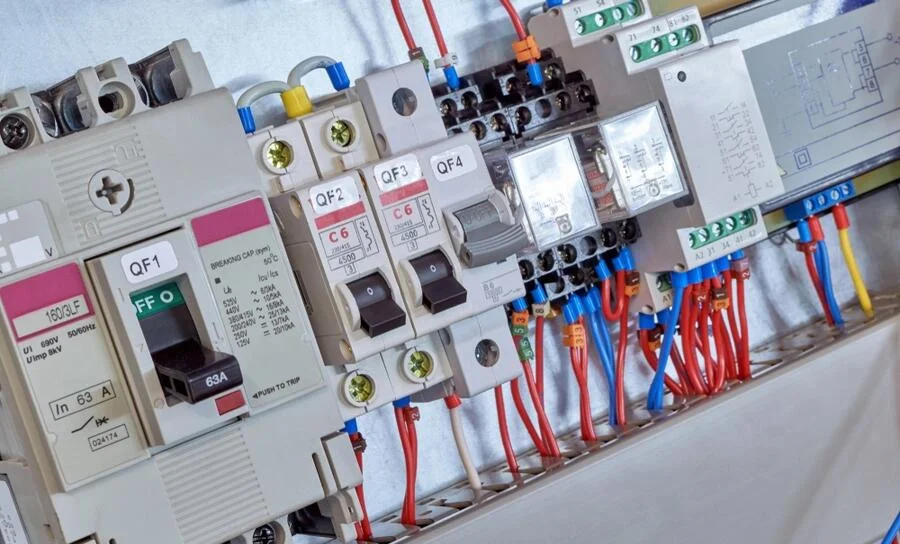
You can employ diodes for safeguarding sensitive or critical electronic components. By using a diode that remains non-conductive under regular conditions, you can effectively prevent sudden voltage spikes, known as transient voltage, or other abrupt signal changes that could cause harm.
In such situations, the diode acts to suppress the voltage, shielding the rest of the circuit from damage that might result from these electrical surges. Without this protection, the circuitry could be susceptible to damage due to excessive voltage without the opportunity to appropriately adapt. Commonly known as transient voltage suppressor diodes (TVSs), these diodes serve to reduce the impact of transient voltage or divert it away from the circuit.
The silicon-based P-N junction of these diodes is capable of managing the transient voltage and subsequently returning to normal operation after the voltage spike subsides. Some TVSs incorporate heat sinks designed to handle voltage spikes over extended durations.
Types Of Diode Circuits
When converting power from alternating current (AC) to direct current (DC) in circuits, you have the option to utilize either a single diode or a set of four diodes. While DC devices operate with charge flowing in a singular direction, AC power oscillates between forward and reverse directions periodically.
This process is crucial in transforming DC electricity generated by power plants into AC power, characterized by a sine wave, that powers most household appliances. Rectifiers play a pivotal role in this conversion by employing either a single diode that allows only one-half of the waveform to pass through or a full-wave rectifier that utilizes both halves of the AC waveform.
The behavior of these circuits is exemplified by the diode circuit. When a demodulator eliminates half of the AC signal from a power source, it integrates two primary components. The first component is the diode, acting as a rectifier to amplify one-half of the AC cycle.
The second component is a low-pass filter which eliminates high-frequency elements from the power source. It consists of a resistor and capacitor, a component that stores electric charge over time, utilizing the circuit’s frequency response to determine which frequencies to permit.
Typically, these diode circuit configurations effectively negate the negative component of an AC signal. Such setups find application in radios that employ a filtering mechanism to distinguish specific radio signals amidst general carrier waves.
Other Types Of Diode Applications
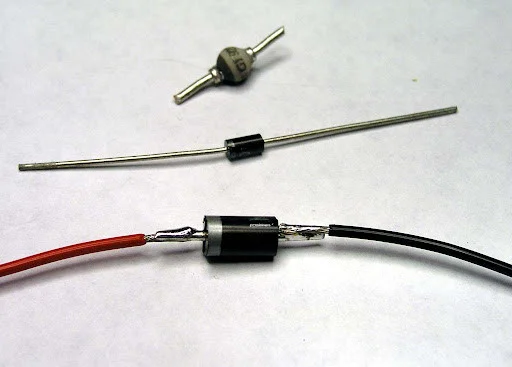
Diodes play a key role in charging electronic devices such as cell phones or laptops by transitioning power from the device’s internal battery to an external power source. These techniques effectively redirect the current away from the power source, ensuring that alternative charging methods can be used if the device’s battery depletes.
The same principle applies to vehicles. In the event of a car battery failure, you can employ jumper cables to rearrange the connection of red and black cables using diodes to prevent current flow in the wrong direction.
Moreover, computers that process binary data in the form of zeros and ones rely on diodes to navigate binary decision trees. These diodes are incorporated as logic gates, the fundamental components of digital circuits that regulate the flow of information by comparing different values. These logic gates are constructed using diode components that are significantly smaller in size compared to diodes utilized in other applications.
Wiring Diodes In Different Applications
When it comes to wiring diodes in different applications, you have various avenues to explore their versatility and significance in electrical circuits. Diode wiring plays a crucial role in numerous functionalities, contributing to the efficient operation of a wide range of systems. Let’s delve into some common applications where diodes are wired to serve specific purposes:
Rectifier Circuits For AC To DC Conversion
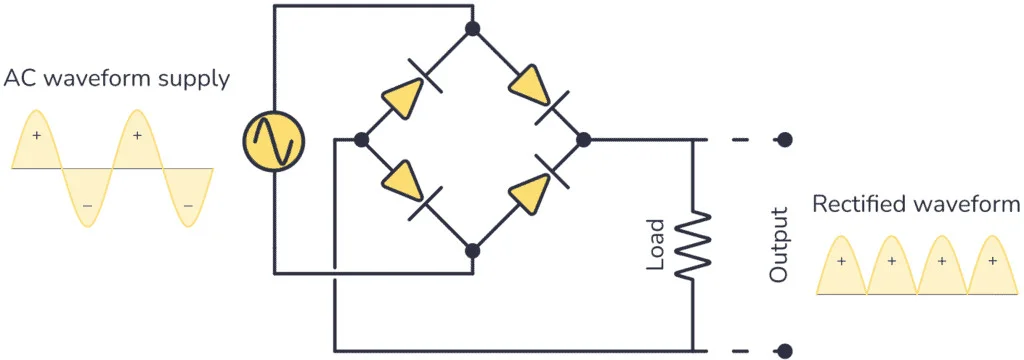
In rectifier circuits, diodes are wired to convert alternating current (AC) to direct current (DC). By allowing current flow in only one direction, diodes rectify the incoming AC signal, making it suitable for powering devices and electronic equipment that require DC power.
Signal Modulation And Voltage Regulation Circuits
Diodes are utilized in signal modulation circuits to manipulate the characteristics of input signals, such as changing the phase or amplitude. In voltage regulation circuits, diodes play a critical role in maintaining stable voltage levels within a circuit, ensuring consistent power supply to connected components.
Circuit Protection From Reverse Voltage And Transient Spikes
Wiring diodes in circuits provide essential protection mechanisms against reverse voltage and transient voltage spikes. By incorporating diodes in the circuit design, you can prevent damage to sensitive components from incorrect polarity connections or sudden fluctuations in voltage levels.
Semiconductor-Based Electronics And Logic Gate Circuits
Diodes are an integral part of semiconductor-based electronics and logic gate circuits. In these applications, diodes are wired to facilitate logical operations, signal processing, and data representation in digital systems. Logic gates, constructed using diodes, form the building blocks of complex electronic devices and computers.
Advanced Diode Wiring Techniques
Parallel And Series Diode Wiring Configurations
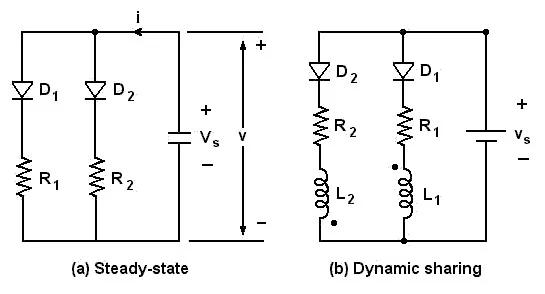
Employing diodes in parallel and series configurations provides versatility and tailored functionality in circuit design. Parallel diode wiring enables the distribution of current across multiple diodes, enhancing current-handling capacity and redundancy. On the other hand, series diode wiring involves sequentially connecting diodes, enabling voltage sharing and precise control over voltage drops within the circuit.
Wiring Diodes For Complex Electrical Systems And Integrated Circuits
In complex electrical systems and integrated circuits, diodes are intricately wired to perform specialized tasks such as signal conditioning, isolation, and voltage clamping. These applications demand precise diode wiring to ensure seamless integration and optimal performance within intricate circuit architectures.
Conclusion
In conclusion, wiring diodes is crucial for the efficient operation of electrical systems. Understanding the applications and advanced techniques empowers individuals to optimize circuit performance, enhance reliability, and implement complex functionalities.
This knowledge underscores the importance of adherence to best practices for successful diode implementation, enabling practitioners to contribute to innovative electronic designs and create dependable electrical systems for diverse applications.